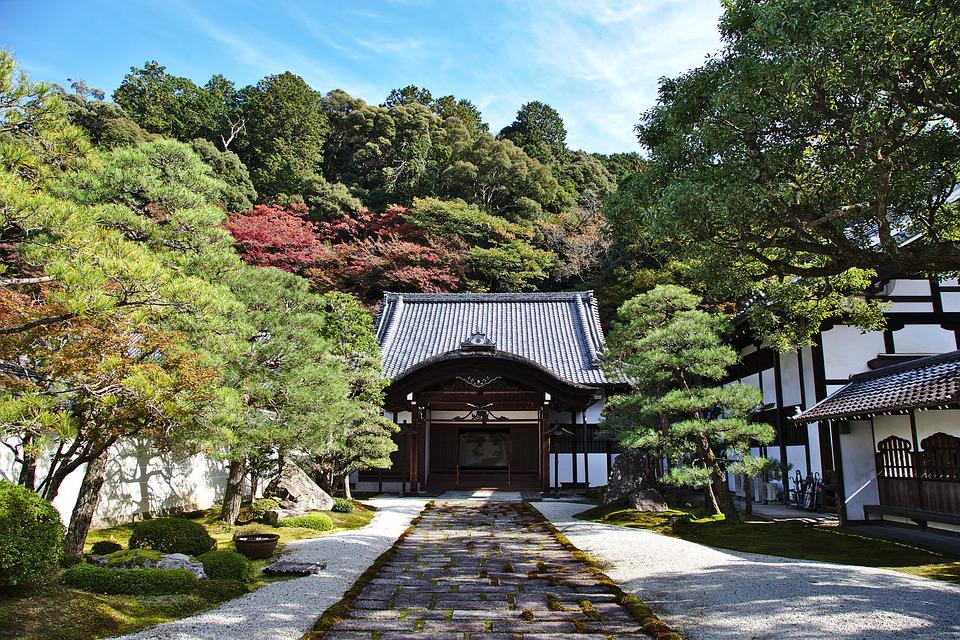How Do You Set Your Japanese Walkway
Contents
– The characteristics of the Japanese step
– The installation of Japanese Steps
– How much does a Japanese walkway cost?
Both practical and aesthetically pleasing, the Japanese step path is a good solution for creating an elegant walkway in a garden. It can be used in all exteriors, from the most traditional to the most contemporary. And thanks to the variety of materials now available, it is no longer just reserved for Zen-inspired gardens.
The characteristics of the Japanese step

Principle
A Japanese step is a more or less regular shaped slab of standard size. The diameter of a rounded model is approximately 30 cm, while a rectangular model is 35 × 30 × 3 cm. The tiles are laid discontinuously, spaced out more or less evenly and aligned. They create an elegant and discreet circulation without damaging the lawn: the garden is not disfigured, and the comings and goings of walkers do not wear down the passage areas.
Origin
The Japanese step or “Tobi Ishi”, which means “flying stones”, has its origin in Asian culture. It is a significant component of the Japanese garden. Its installation is not random and follows precise rules in keeping with tradition. There is not one but several Japanese steps offering different styles: strict and geometrical (“Shin”), free and natural (“So”), and combining both (“Gyo”).
Materials
Japanese steps are now available in a wide variety of materials:
– natural stone, limestone, reconstituted stone, granite, rot-proof resin, cast concrete, wood, cast iron, and slate.
Reconstituted stone is the most widely used: very solid, and it offers excellent resistance to use. It does not rot, is lighter than natural stone, and is non-slip (provided it has been treated). It imitates stone perfectly, of course, but also wood.
Slate tiles are better for modern gardens, cast iron tiles are better for romantic settings, and limestone or granite tiles are better for all types of exteriors.
Many more unique models are available: enhanced size, luminosity, personalization, and more!
The installation of Japanese steps

The installation of Japanese steps on a lawn is straightforward. Tiles are close together to encourage you to slow down, while further apart tiles invite you to walk more freely. However, it’s crucial to note that the Japanese steps are designed to lead the eye and modulate the stride.
The layout of the path
The Japanese steps can be arranged as desired, creating a winding or straight path. The tiles should be placed at the proper distance for an easy and pleasant walk, i.e. between 50 and 60 cm. You can set the steps either on the traffic axis or staggered, about 15 cm from the axis. After that, you’ll need to figure out how many tiles you’ll need to lay.
Good to know: the measurement must be taken from the middle of the tile to obtain the right distance between each tile.
To draw out the trail, use a garden hose. This is a fantastic approach to envisioning your future path.
Laying
Once the path has been laid out
1. Place the steps in the right place and mark the outline of each tile with a spade.
2. Cut the floor to the thickness of the tiles + 5 cm after removing the tiles. The floor must be lowered by 8 cm if the Japanese step is 3 cm thick.
3. Fill each hole with a 5 cm layer of sand, then tap the step in place with a hammer. This keeps the slab from sinking too deeply into the ground over time.
4. Finally, use a stick (such as a broom handle) to ensure that the steps do not extend above the lawn level, which would impede the passage of the mower.
How much does a Japanese walkway cost?
Where can I buy one?
Japanese steps have become so successful that they are now sold in many stores: in supermarkets in the gardening section (as soon as the weather is fine), in garden centres, in DIY and decoration shops, in shops dedicated to garden design and decoration, and on the Internet, where the offer is abundant.
At what price?
Japanese steps are sold individually. The material influences the price, followed by the size and design of more elaborate tiles.
Here are some guidelines, ranging from $5 to $25. Count on:
– $5/unit for a concrete slab;
– $7/unit for a reconstituted stone slab;
– $9/unit for a granite slab;
– between $12 and $17 per unit for a decorated cast iron slab;
– between $12 and $17 per unit for a slate slab;
– $25/unit for a marble slab.






1 Comment
[…] shapes of garden paths are possible, as long as you avoid the straight path dividing the land in two. Your goal is to […]